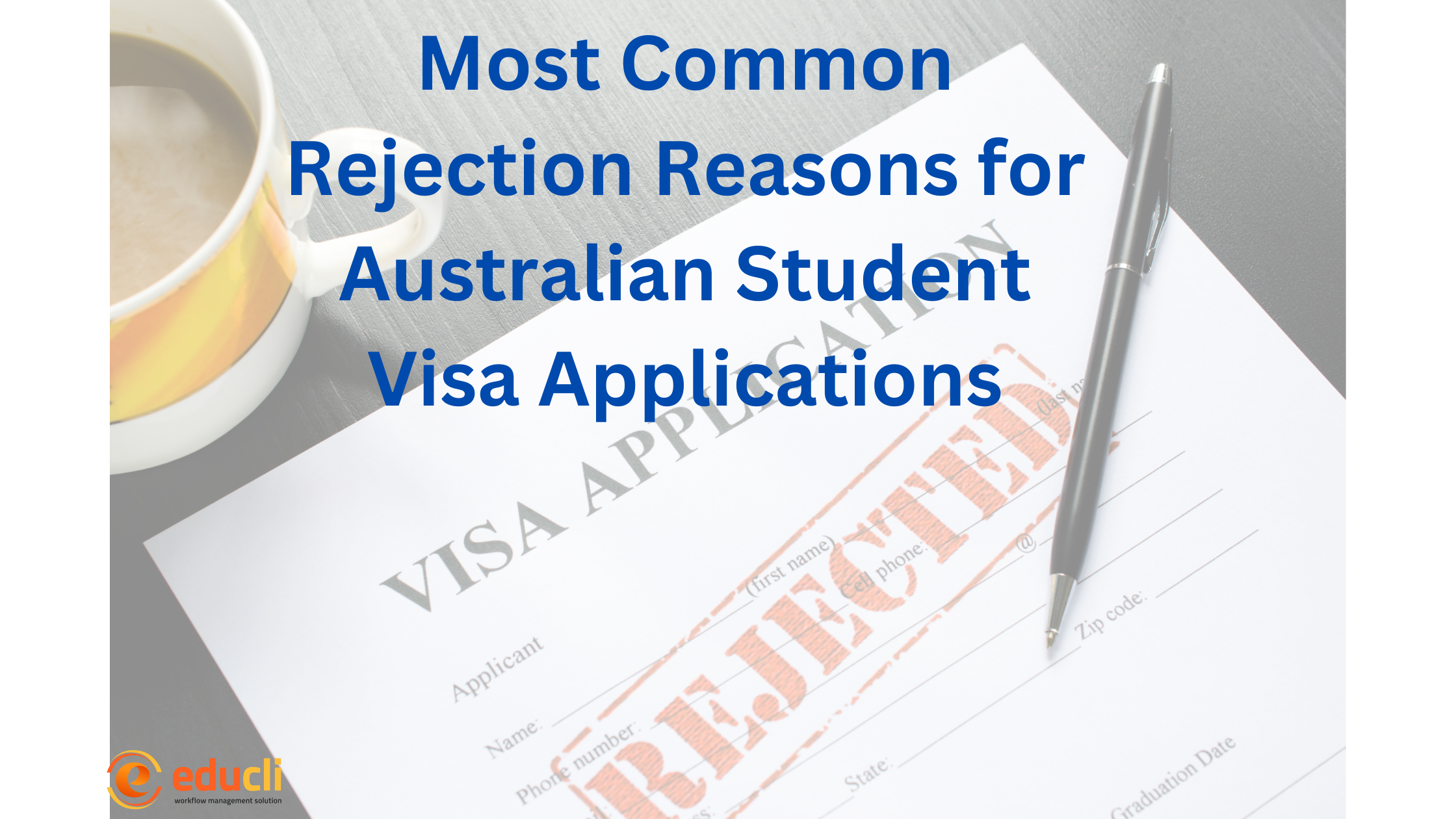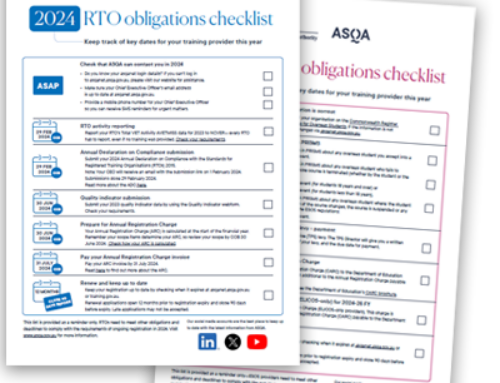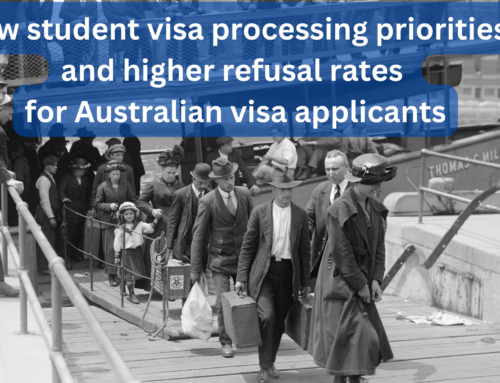The rejection rate for the Australian student visa is over 50%, which means that fewer than fifty percent of applicants from certain countries are granted their visas. This rate varies depending on the country of origin a student comes from. In the Philippines, India, China, Bangladesh, Pakistan, and Thailand, the rejection rate ranges from 80 to 90 percent, while in South America, it ranges from 30 to 40 percent, and in European countries, it is below 10 percent.
We have compiled a list of the most common reasons for the rejection of student visa applications for Australia in order to ensure that applicants do not make these errors. These rejection reasons can range from issues with the applicant’s personal circumstances, such as criminal history or health conditions, to problems with the application itself, such as incomplete documentation or false information provided.
- Not meeting the Genuine Student Requirement (Genuine Temporary Entrant or GTE)
When applying for a visa to enter Australia, the GTE is one of the most important criteria to consider. This integrity measure is something that one must not ignore under any circumstances. The purpose of this test is to demonstrate to the government of Australia that the applicant is providing solely for the purpose of pursuing further education and that they do not have any other motivations.
The applicant is required to provide evidence in their application that demonstrates the reasons for their trip to Australia, as well as information regarding how and why they chose this particular study program and location, and what the outcomes of their studies will be for their future professional development and employment opportunities. In order to determine whether or not the applicant is genuine, a case officer will evaluate the quality of the information that is provided and approve or reject the application (including other information; see below).
Please note that the Genuine Student requirement will replace the GTE requirement beginning in 2024. Please be aware of this upcoming change. Upon completion of their studies, the applicants will have the opportunity to indicate a pathway towards obtaining a permanent visa.
When composing the GTE letter, it is imperative to take into account the following elements:
- Reasons why they are choosing the selected provider / course
- Outcome of the course for future employment, including research of salaries and employment prospects
- Reasons for not studying at home, even if there is a similar degree, include difficulties in the home town/Country of residency.
- Potential conditions in Australia include knowledge of the course and education provider, scheduled student accommodation arrangements, prior study, and financial ability.
- Importance of the course to the applicant’s future, for example, the estimated salary in the applicant’s home country that might be obtained using the degree qualifications.
- Immigration history of the applicant; previous student visa applications for Australia or other countries (including prior visa rejections/cancellations)
- Failure of not meeting the English requirements
The Australian government has established specific requirements for applicants seeking student visas to demonstrate their proficiency in English. Before applying for a student visa, prospective students should verify that they fulfill the prerequisites for the level of study they intend to enroll in. Applicants for an ELICOS (English Language Intensive Course) are exempt from providing proof of English proficiency because they will be taking an English course. This is the only exception to the rule.
Educli has a comprehensive list of education providers, please visit our page for more information.
- Insufficient financial funds
From 1 October 2023, student visa applicants will need to show they have a minimum of AU$24,505 in savings to cover annual living costs, to make sure that overseas students can afford to live in Australia while they study.
Acceptable sources of funds
The following sources of funds are acceptable for student visa funding evidence:
- Bank statements showing that the applicant has at least AUD 24,505 in savings in their own name or in the name of their parents or guardians.
- Scholarship or sponsorship letters from recognized organisations.
- Letters from parents or guardians stating that they will support the applicant financially while in Australia.
- Evidence of employment income, such as pay slips or tax return.
- Evidence of other assets, such as property or investments.
It is the responsibility of the applicant to demonstrate their financial stability.
- Insufficient or Inadequate Overseas Students Health Cover (OSHC)
Australian student visa applicants are required to have an OSHC through their whole stay in Australia (on student visas).
The applicants can arrange OSHC through their provider, their agent, or directly through an insurance company. The OSHC letter must include the start and end dates of their policy, the policy number, and its terms and conditions. The OSHC letter must be submitted together with the Australian student visa application. Lack of, or not having sufficient, OSHC will result in visa refusal.
- Failing the Character test
A character evaluation will be conducted on all applicants to Australia, irrespective of their status as students or not. Australian authorities may request a police check from each nation where the applicant has resided for more than a year in the previous ten years. The case officer will scrutinize the written statements for any indications of poor character, which could potentially result in the denial of the visa. Occasionally, applications that have been denied will also be taken into account. Some applicants may be banned for up to 3 years for future visa applications.
- Failing the health test
Keep in mind that the Australian government has extremely stringent physical fitness requirements for applicants regarding the medical examination. Medical examinations are essential for temporary visa applications; therefore, prior to submitting your application for a student visa, please verify whether the Department of Home Affairs requires any particular health examinations.
- Providing incomplete and/or fraudulent documents
Authentic documentation must be presented to back up the information on the Australian student visa application form. If more documents are required, the immigration office will inform the applicant. The immigration officer may request an explanation for any corrected documents, missing documents, or documents that seem to be tempered with.
- Having unsatisfactory academic progress
One of the most common reasons for the rejection of student visa applications in Australia is the lack of satisfactory academic progress. Australian immigration authorities place a high emphasis on ensuring that international students maintain a certain level of academic performance. Applicants must demonstrate their ability to succeed in their chosen course of study. Failure to do so, such as having a history of poor grades, repeated course failures, or a pattern of academic underperformance, can raise concerns about the student’s genuine intent to pursue education and their capability to cope with the academic demands. This scrutiny is in place to maintain the integrity of the Australian education system and ensure that students can benefit from their time in the country. A record of unsatisfactory academic progress suggests to visa officers that the applicant may not be fully committed or able to complete their intended course of study, leading to visa denial.
- Having unsatisfactory attendance
A significant factor leading to the rejection of student visa applications in Australia is insufficient attendance in the course of study. Australian visa requirements are stringent about students maintaining a high level of attendance, typically above 80%, in their enrolled courses. This criterion is crucial because consistent attendance is viewed as a key indicator of a genuine commitment to studies and adherence to visa conditions. If an applicant has a history of low attendance, it raises concerns about their genuine intent as a student and their dedication to their academic responsibilities. Such patterns of absenteeism can be interpreted as a lack of seriousness towards educational opportunities or an inclination towards non-compliance with visa regulations. Consequently, failing to meet the attendance requirements often leads to visa denials, as it undermines the credibility of the student’s purpose in Australia. This policy is in place to ensure that international students fully engage with their educational experience and respect the conditions of their stay in the country.
- Not paying for their course
Non-payment of course fees is another prevalent reason for the rejection of Australian student visa applications. The ability to financially support oneself, including paying tuition fees, is a fundamental requirement for obtaining a student visa in Australia. When applicants fail to provide evidence of having paid their course fees, or if there’s a history of delayed or incomplete fee payments, it casts doubt on their financial stability and commitment to their studies. This financial aspect is crucial as it demonstrates the applicant’s preparedness and seriousness about their educational endeavors in Australia. Visa authorities scrutinize an applicant’s financial capacity to ensure that they can sustain themselves without undue hardship or reliance on unauthorized work. Inability to pay course fees, or irregularities in fee payment, can suggest to visa officers that the applicant may not be genuinely interested in studying or might struggle to support themselves during their stay. Consequently, ensuring that course fees are paid on time and documented is essential for a successful visa application, as it directly reflects on the student’s reliability and intent.
- Not having a valid Passport
Also worth mentioning is not having a valid passport. There are two main requirements that the Immigration Office of Australia checks for, which are:
- The validity of the applicant’s passport should exceed the end of the course in which the student has gained admission to the Australian university by at least 6 months.
- The issuance of the visa will fall within the validity of their passport; however, no more than 10 years.
Contact us if you have any questions, suggestions, or would like to know more about the above article.




